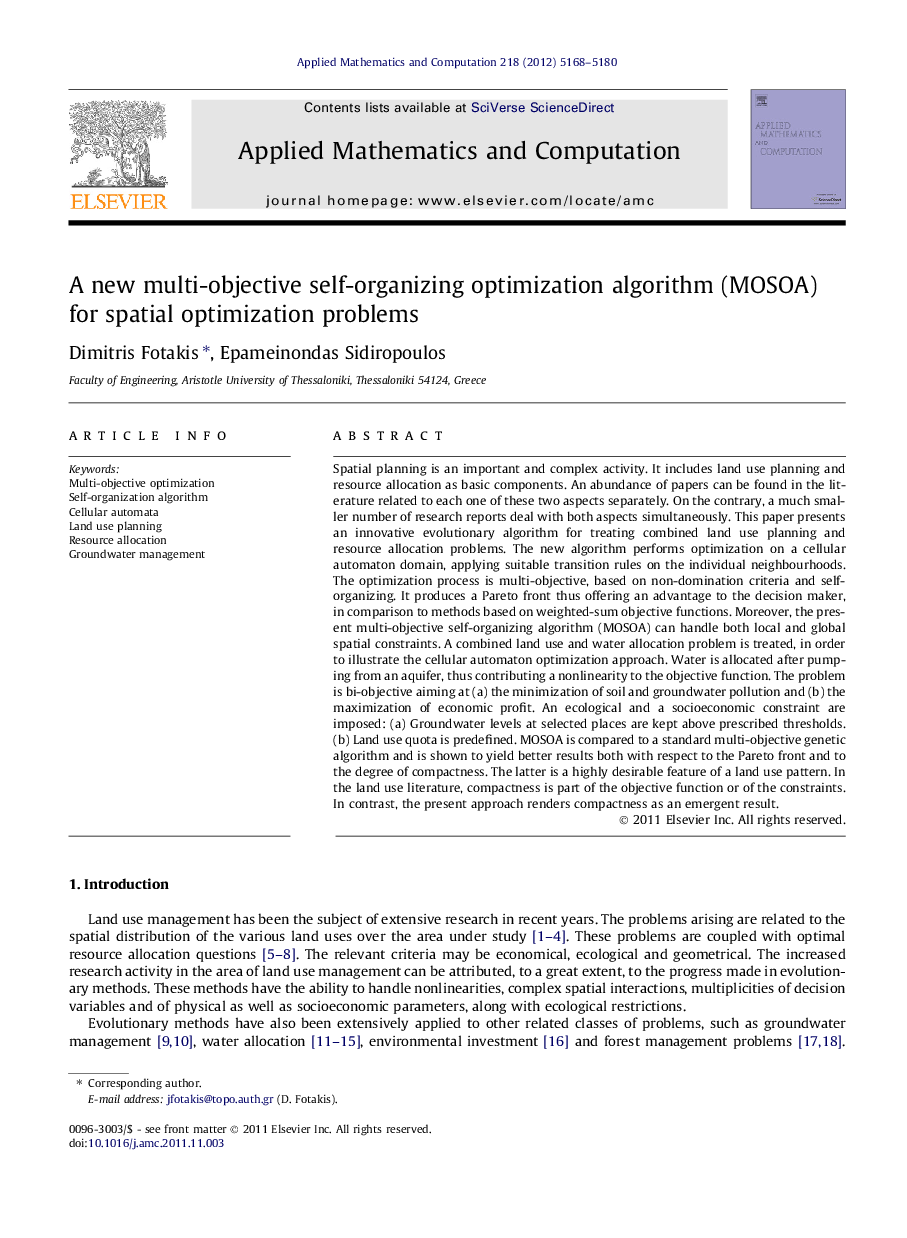| کد مقاله | کد نشریه | سال انتشار | مقاله انگلیسی | نسخه تمام متن |
|---|---|---|---|---|
| 4631345 | 1340621 | 2012 | 13 صفحه PDF | دانلود رایگان |

Spatial planning is an important and complex activity. It includes land use planning and resource allocation as basic components. An abundance of papers can be found in the literature related to each one of these two aspects separately. On the contrary, a much smaller number of research reports deal with both aspects simultaneously. This paper presents an innovative evolutionary algorithm for treating combined land use planning and resource allocation problems. The new algorithm performs optimization on a cellular automaton domain, applying suitable transition rules on the individual neighbourhoods. The optimization process is multi-objective, based on non-domination criteria and self-organizing. It produces a Pareto front thus offering an advantage to the decision maker, in comparison to methods based on weighted-sum objective functions. Moreover, the present multi-objective self-organizing algorithm (MOSOA) can handle both local and global spatial constraints. A combined land use and water allocation problem is treated, in order to illustrate the cellular automaton optimization approach. Water is allocated after pumping from an aquifer, thus contributing a nonlinearity to the objective function. The problem is bi-objective aiming at (a) the minimization of soil and groundwater pollution and (b) the maximization of economic profit. An ecological and a socioeconomic constraint are imposed: (a) Groundwater levels at selected places are kept above prescribed thresholds. (b) Land use quota is predefined. MOSOA is compared to a standard multi-objective genetic algorithm and is shown to yield better results both with respect to the Pareto front and to the degree of compactness. The latter is a highly desirable feature of a land use pattern. In the land use literature, compactness is part of the objective function or of the constraints. In contrast, the present approach renders compactness as an emergent result.
Journal: Applied Mathematics and Computation - Volume 218, Issue 9, 1 January 2012, Pages 5168–5180